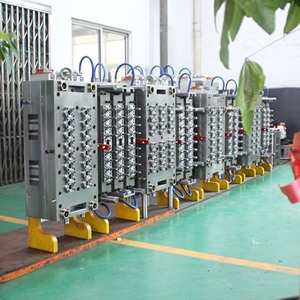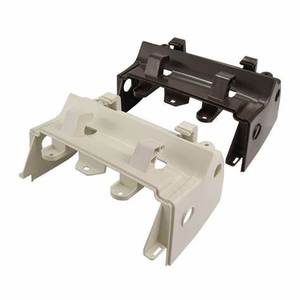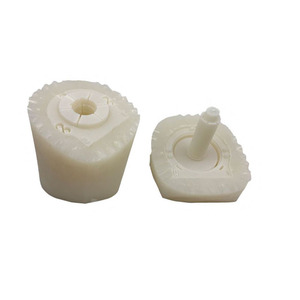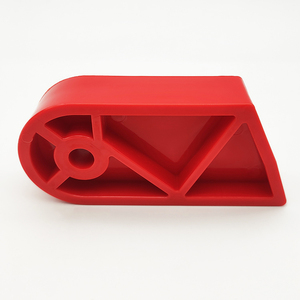
All categories
Featured selections
Trade Assurance
Buyer Central
Help Center
Get the app
Become a supplier

(1119 products available)








































Injection moulds are critical in the mass production of thermoplastic components. A 64-cavities injection mould is ideal for manufacturing products that require high volume consistency and rapid production rates through its multiple cavities. These moulds come in different shapes depending on the nature of the end product.
The following types of 64-cavities injection moulds include:
Standard moulds
Usually, standard 64-cavity moulds are used in the production of common thermoplastics aimed at the production of simple shapes. These moulds are known for their effectiveness when achieving large volume targets with basic part configurational requirements. For instance, a standard 64-cavity injection mould would be ideal for producing simple toys, cups, or technical components.
Hot runner injection moulds
Typically, hot runner 64-cavity moulds maintain the injected plastic at a temperature above its melting point. As a result, reduced wastage is achieved because the hot runner systems prevent the solidification of plastics in the injection channels. These moulds are usually suitable for producing thin-walled parts or any other products where material costs are paramount. Typically, hot runner systems are applied in the production of complex technical components, where high precision is needed.
Cold runner moulds
On the other hand, cold runner injection moulds operate at ambient temperatures. As the name suggests, it is applicable for construction purposes. Normally, a cold runner 64-cavity mould is used when lower production costs are prioritized above the efficiency of material usage. Nevertheless, it may lead to some higher waste rates due to the solidification of the injected materials. They are best suited for large components or materials that are less sensitive to temperature fluctuations.
Stack moulds
Stack 64-cavity injection moulds add two or more injection moulding cycles through stacked plates. This increases productivity without necessarily adding to the size of the moulding machine. Ideally, they are suitable for high volume production of medium complexity parts such as containers or automotive components. They permit faster cycle times while still maintaining the great delimitation of cavities.
Micro-injection moulds
Micro 64-cavity injection moulds are ideal for the production of highly intricate micro-components using minute volumes of injected materials. They can be classified as ultrahigh-precision moulds. A micro-injection 64-cavity injection mould is specifically designed for producing products for specialized applications. This includes medical devices, electronic components, or micro-gears in precision mechanics.
A 64-cavities injection mould is a versatile tool that plays a key role in several modern-day manufacturing practices. It is greatly valued for efficiency and large production capability. It is applied in the following areas:
Consumer goods
Today, injection moulding is normally applied in the production of diverse consumer goods. This includes items like plastic containers, toys, and household appliances. Specifically, the 64-cavity injection mould is useful in producing these commonly used items in bulk. Usually, this frequent production guarantees consistency in quality and design. Economically, this helps large scale production that can meet consumer demands without any compromise on quality.
Automotive Industry
Commonly, the 64-cavity injection moulds are used in the manufacture of several plastic parts used in vehicles. Ideally, this includes grilles, panels, and even some interior components. Typically, these moulds efficiently produced multiple identical parts. This also made it possible for automotive manufacturers to reduce the time and costs associated with production. Also, the high level of precision associated with these moulds added to the functionality and aesthetics of the vehicles.
Medical Devices
Injection moulding, in general, is used in the medical fields for the production of disposables. Typical examples of disposables are syringes, implants, and diagnostic equipment. Practically, 64-cavities injection moulds are useful in producing these components in large quantities. Usually, this practice ensures both sterility and reliability. Moreover, it supports the needs of the healthcare systems while adhering to the strict regulations on the quality and safety of medical products.
Packaging Solutions
64-Cavity injection moulds are widely used in creating plastic containers. This includes bottles, caps, and complex container designs. Usually, the capability of these moulds to produce numerous units per cycle permits ready and efficient responses to the requirements of the packaging industry. This is because, in this industry, demand fluctuates drastically. Consequently, it results in lower production costs and improved sustainability by reducing cycle times and resource wastage.
Electronics
Casings, covers, and other components are produced through injection moulding in the electronic industry. Also, 64-cavities injection moulds are often employed when relatively more identical parts are required. Specifically, since the electronic goods market is highly dynamic, the efficiency of these moulds contributes immensely to manufacturers' agility. It enables rapid production with increased premium quality of the end products.
A 64-cavities injection mould is a type of injection mould having 64 identical cavities. This is ideally used to produce several identical plastic parts simultaneously. Below are some of its crucial specifications and features:
Cavity number
The cavity numbers, in this case, are 64. Obviously, this allows the mould to make 64 parts in every injection cycle. Normally, this high cavity count is mainly suitable for large volume production. Usually, it leads to economies of scale.
Cavity pressure
Cavity pressure involves the pressure at which plastic is injected into the mould. Every injection has to be done at a specific pressure level to ensure quality. This largely depends on the type of material used and the design of the mould. Normally, common materials used include polypropylene and polycarbonate. Cavity pressure, in this regard, mostly ranges between 500 to 2000 psi.
Mould material
The commonly used materials for constructing cavity 64 injection moulds include steel and aluminum. Often, steel is preferred for its durability. It is generally used for long production runs. Usually, it stands up to wear. On the other hand, aluminium is economically friendly, quick to machine, and relatively lighter. Stamped aluminium 64-cavities injection moulds are ideal for short-run production.
Cooling system
Frequently, cooling is vital in injection moulding. It helps in reducing cycle times and enhancing part quality. Standardly, 64-cavity moulds utilize advanced cooling techniques. This includes conformal cooling channels that ensure uniform temperature distribution. Normally, the channels are typically designed to follow the mould's shape closely. This is commonly used to promote efficient heat removal from the cavities.
Mould life
Usually, mould life refers to the duration or number of cycles a mould can perform before it starts wearing out. Besides, it can be prolonged through maintenance, which includes regular inspections and cooling system checks. In addition, materials such as H13 steel can also be hardened to increase mould life.
Application
A 64-cavities injection mould is widely used in manufacturing products such as plastic containers, bottle caps, small toys, and electronic components. These products require high consistency and low production costs.
Material compatibility
Injection moulds are required to be manufactured with materials that are compatible with the project materials. For instance, if the project require thermosetting plastics, then steel 64-cavities injection moulds are favored. Also, aluminum moulds are suitable for materials having lower density.
Production volume
Ideally, standard 64-cavities injection moulds are made to cater to high volumes of production. So, when one is expecting to produce these plastics in 'thousands' a 64-cavities injection mould is quite necessary. In case the production volume is lower, one can get away with fewer cavities.
Cycle time
The cycle time is a crucial aspect to consider when choosing an injection mould. Basically, more cavities lead to more parts per cycle. However, this is only effective when the machine can sustain it. Hence, one needs to consider the cycle time to meet the production efficiency and timeliness required.
Part design
Cavity count selection depends on part design. Ideally, if the parts are simple, one can go for the 64-cavities injection mould. It is also recommended for products requiring similar designs. However, if they are complex or require different types, one might consider fewer cavities.
Cost
64-cavities injection moulds are costly than fewer molds. However, they also offer cost-saving benefits because they produce more parts simultaneously. Therefore, one should ensure that the advantages it presents over the initial investment cost align with the overall project budget.
Mould maintenance
Usually, maintenance is an essential consideration. Normally, more cavities mean more maintenance requirements. In this case, one should consider the long-term maintenance implications. This can help in curbing possible interruptions in production.
Technical assistance
Basically, these moulds need technical expertise in both operation and design. Therefore, one should ensure that there are skilled personnel and service providers who will be able to handle these advanced moulds and even factories for injection.
The 64-cavities injection moulds are used in high-volume production of components that require great consistency, such as bottle caps or toys.
Normand, they are efficient in producing a larger number of parts per cycle due to their multiple cavities. This gives a higher yield than other injection moulds.
Manufacturing materials, in this case, should be thermoplastics. These materials flow easily during the injection process and can be remoulded upon cooling.
Steel and aluminum are the two most common materials for constructing injection moulds. Typically, steel offers enhanced durability, while aluminium is lightweight.
Cooling systems lessen the cycle time hence improving overall efficiency by ensuring even temperature distribution across all 64 cavities.
These 64-cavities injecttion moulds are applied in the production of household items such as containers, toys, automotive components, and electronic housings.